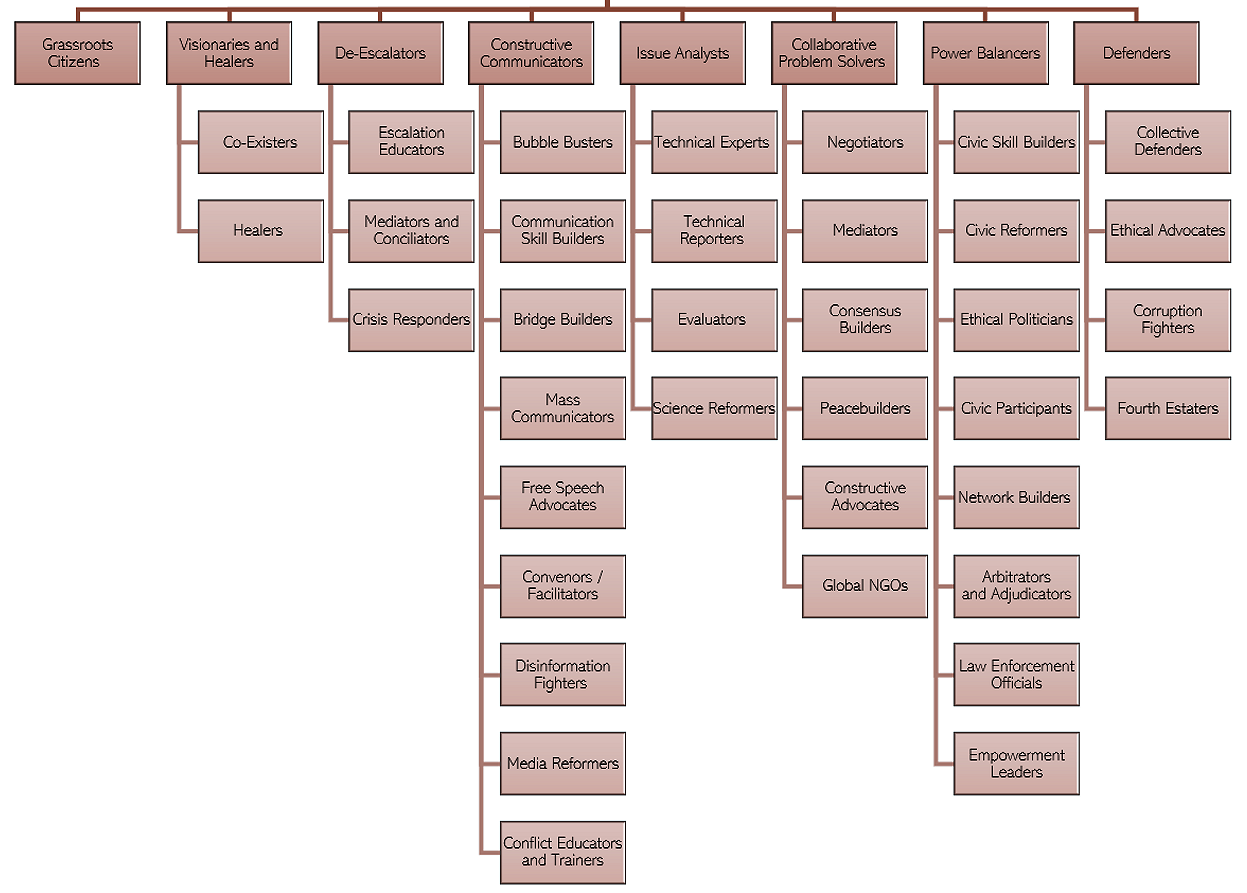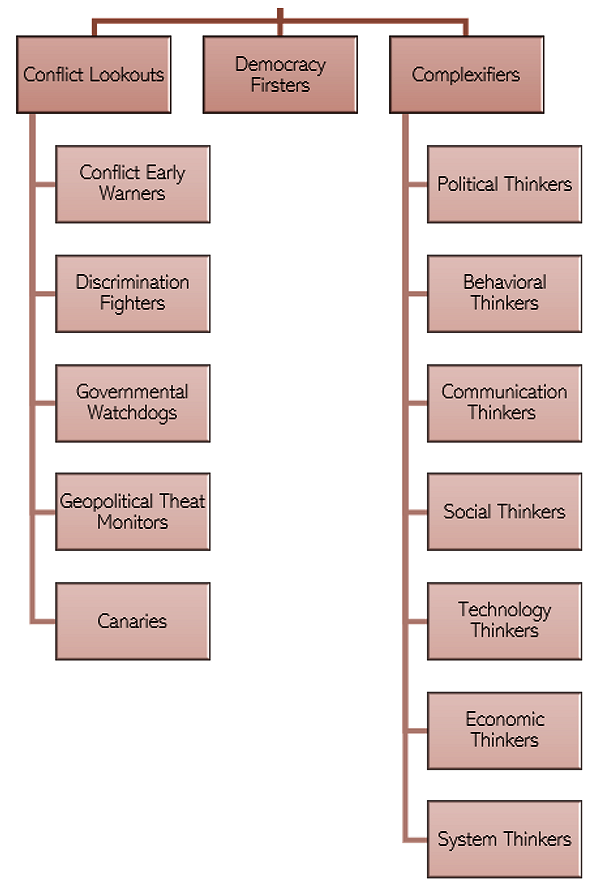Specialized Massively Parallel Roles / Tasks

7. Massively Parallel Roles & Tasks

The massively parallel approach is based on the realization that there is no one response, no magic bullet, or simple solution to the many problems listed earlier in this guide. The scale and complexity of these challenges must be recognized, and any solutions proposed and implemented must be able to function at this scale and level of complexity. In order to do this, massively parallel peacebuilding and democracy building require that thousands, even tens of thousands, of people and organizations work in a wide range of specialized roles, each focused on making a significant contribution to one problem, often in a local community, sometimes more widely. Put together, all these efforts contrubute to the larger democracy-strengthening effort. We have developed a long list of the different roles that are needed to address the problems listed in this guide-- right now we have 53. There are probably more — we are adding to them all the time.
We find it useful to divide up these roles into two different categories: conflict strategists and conflict actors. Guy often points out that this distinction is related to the distinction between right-brain thinking and left brain thinking. He talks a lot about the February 4, 2019 National Public Radio Show "Hidden Brain," entitled "One Head, Two Brains." That show admits that the distinction is very controversial, but even if it isn't precisely accurate, it does explain the difference between our two kinds of roles very well. On the Hidden Brain episode, Psychiatrist Iain McGilchrist explained that
the brain is divided into two hemispheres so that it can produce two different views of reality. One of the hemispheres, the right, focuses on the big picture. The left focuses on details. Both are essential. If you can't see the big picture, you don't understand what you're doing. If you can't home in on the details, you can't accomplish the simplest tasks. This fundamental difference in orientation turns out to have profound consequences for everything the two hemispheres do.
He went on to explain that
All living creatures need to be able to attend to the world in two different ways, which require quite different attention at the same time. And this is simply not possible unless they can work relatively independently. On the one hand, in order to manipulate the world - to get food, to pick up a twig to build a nest - you need a very precise, targeted attention on a detail in order to be able to achieve that and be ahead of your competition. But if you're only doing that - if you're a bird just concentrating on the little seed, you'll become somebody else's lunch while you're getting your own because you need, at the same time, to be paying the precise opposite kind of attention - not piecemeal, fragmented and entirely detailed but sustained, broad and vigilant for predators and for other members of your species.
But there is simply too much to attend to in complex systems and complex intractable conflicts for one person or even one organization to attend to both the big picture (which is enormous) and the details at the same time. For that reason it is essential that people and organizations fill right brained and left brained roles, which we call conflict strategists and conflict actors. The strategists are looking at the big picture, analyzing what needs to be done in general terms, and the actors are then looking at specific situations and trying to actually implement the ideas that the strategists come up with (as well as some of the actors' own ideas, most likely). But to the extent that the actors make use of the big picture ideas of the strategists, the more likely they are to be successful and the less likely they are to be blind-sided by some threat coming in from behind or the side (figuratively) that they weren't paying attention to, because they were focused on the small scale. (Using McGilchrist's term, they are less likely to "become somebody's lunch."
We originally laid out the details of these roles in four newsletters, which are linked below. We also have a guide entry for each of the roles that appear in the subsidiary folders. We also have created two charts that show how all the roles relate to each other. The first chart shows the Strategy Roles.
Conflict Strategy Roles
The second chart show the actor roles. (Click on the diagram to see a bigger version.)
Constructive Conflict Actor Roles

Resources on this Topic
To see all Guide Resources on this topic, scroll within the resource box.
Stars indicate resources that we think are especially useful.








